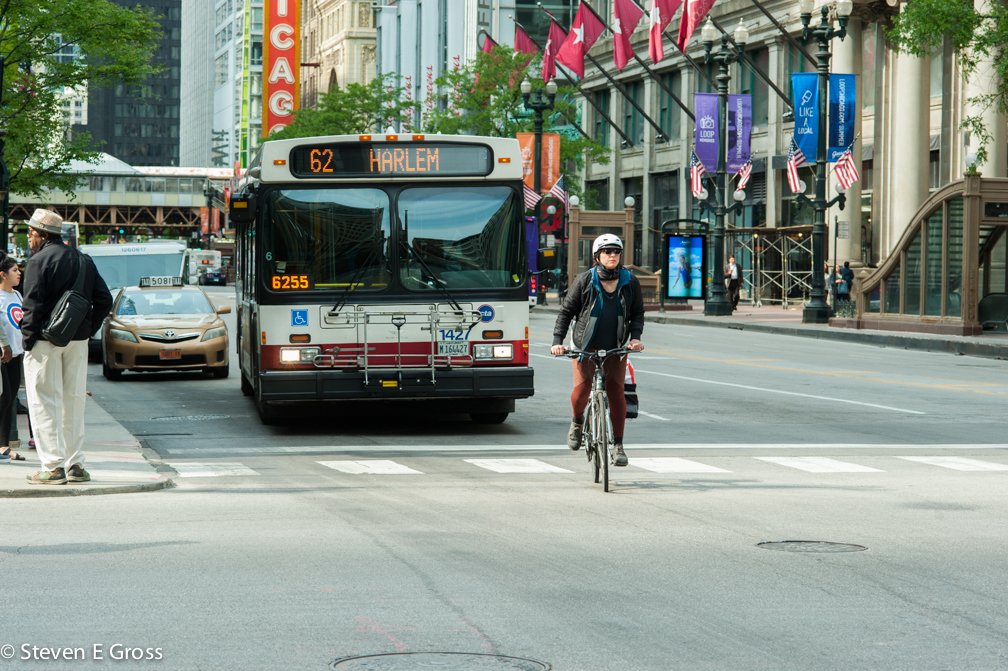Active Trans Campaign Organizer W. Robert Schultz III, a 31st Ward resident, provided testimony at a Chicago City Council hearing on the city’s infrastructure needs on August 18. The following is an excerpt of his remarks.
I have lived in Belmont Cragin, Logan Square, and Uptown. Over the 30 years that I lived in Chicago, I have worked in nearly every one of its 77 community areas, and my Chicago experiences started as a frequent visitor to Englewood in the 1960s.
I chose to make Chicago home because I wanted to live a car free. This means walking to a Chicago Transit Authority bus stop if I am heading out for shopping or work, or recreational-, educational-, or health-related activities.
I’m excited to represent Active Trans’ 20,000 supporters today! Active Trans’ mission is to advocate for walking, bicycling, and public transit to create healthy, sustainable, and equitable communities.
Active Trans’ has two proposals relevant to this committee’s work and the 2021 Chicago budget:
- Active Trans is advocating for creating 10 miles of additional bus lanes before the end of 2020. Once that 10 miles is built, then actions should be taken to fund and build 20 more miles of bus lanes by the end of 2021. This should be part of a COVID-19 response to make essential workers’ commutes as safe, fast, and reliable as possible.
- To make our streets safer for everyone, Active Trans is advocating for a $20 million Safe Streets Fund for walking and biking infrastructure on high-crash corridors. Given data showing that most of the city’s most dangerous corridors are on the South and West Sides, this investment advances the city’s INVEST South/West initiative and broad racial equity goals. Utilizing menu money is an insufficient strategy to systematically scale up pedestrian and bike infrastructure across Chicago to increase public safety.
We recognize making progress in these areas requires having sufficient city staff to do the work. That means the Chicago Department of Transportation needs resources to hire more full-time pedestrian, bike, and transit planners, in addition to more full-time traffic engineers. Current staffing in these areas pales in comparison to peer cities and is a major barrier to progress.

